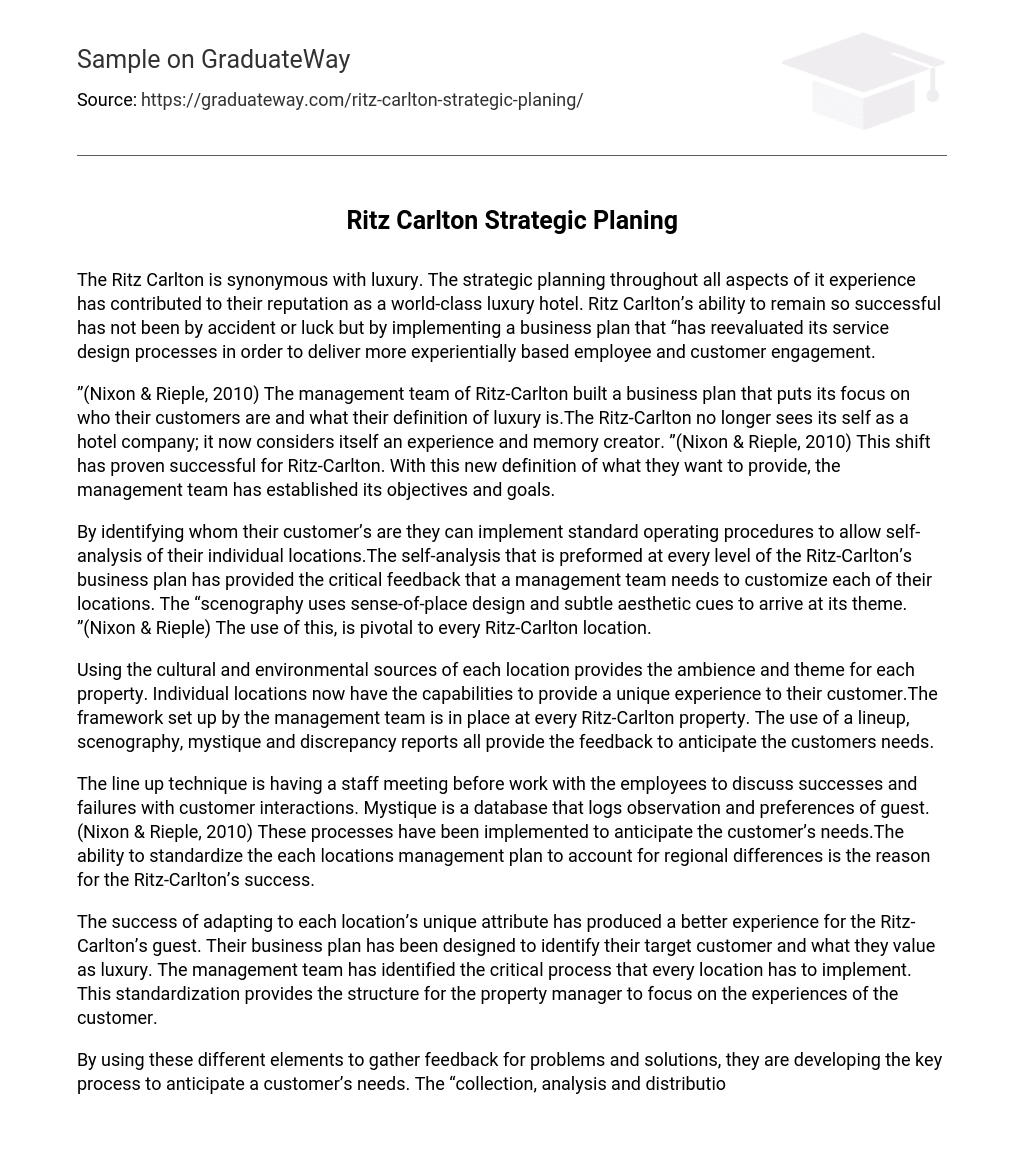The Ritz Carlton is renowned for its outstanding quality and luxury. Its meticulous strategic planning in various aspects of operations has been instrumental in establishing itself as a superior establishment. The continuous prosperity of The Ritz Carlton stems not from luck or coincidence, but from the execution of a business plan that emphasizes enhancing employee and customer engagement through experiential service design processes.
“(Nixon & Rieple, 2010) The management team of Ritz-Carlton devised a business plan that centers around identifying their customers and understanding their definition of luxury. Rather than viewing itself as a hotel company, Ritz-Carlton now sees itself as a creator of experiences and memories.” (Nixon & Rieple, 2010) This shift has been successful for Ritz-Carlton, as the management team has set clear objectives and goals in line with this new perspective.
By identifying their customers, Ritz-Carlton can establish standard operating procedures for self-analysis at each location. This self-analysis is crucial for management teams to tailor their services accordingly. The incorporation of “scenography,” which utilizes sense-of-place design and subtle aesthetic cues, is essential for all Ritz-Carlton locations. (Nixon & Rieple)
The Ritz-Carlton properties utilize the distinct cultural and environmental influences of each location to curate an exclusive ambiance for their patrons. Each destination now offers a truly unparalleled experience. The management team has implemented a comprehensive framework that is applicable across all Ritz-Carlton establishments, encompassing lineup, scenography, mystique, and discrepancy reports. These components aid in soliciting feedback and proactively addressing customer requirements.
The line-up technique involves conducting a staff meeting with employees before work to discuss customer interaction successes and failures. Mystique is a database that records guest observations and preferences (Nixon & Rieple, 2010). These processes have been implemented to anticipate the needs of customers. The Ritz-Carlton’s success can be attributed to its ability to standardize management plans for each location, taking into account regional differences.
The Ritz-Carlton’s success in adapting to each location’s distinctive attributes has resulted in an enhanced guest experience. Their business plan aims to identify the target customer and understand their perception of luxury. The management team has identified essential processes that every location must adopt, ensuring consistency. This standardization allows property managers to prioritize customer experiences.
The Ritz-Carlton management team has implemented a crucial procedure to foresee customer requirements. This procedure involves obtaining feedback for issues and resolutions, as well as gathering, evaluating, and distributing information, including output and quality reports on company processes (Brown, Curry, Jeffery & Edmund, 2003 Pg 100). The Ritz-Carlton’s capability to anticipate customer desires and necessities has distinguished them from their rivals irrespective of location and workforce (Reference).
Nixon, N. W. and Rieple, A. (2010).
The Ritz-Carlton employs experiential service design to convey abundance in times of insufficiency, as discussed in the article “Luxury Redesigned: How The Ritz-Carlton Utilizes Experiential Service Design to Portray Abundance in Times of Insufficiency” published in the Design Management Journal (Vol. 5, Issue 1, pp. 40-49). The article’s doi is 10.1111/j.
1948-7177.2010.00015.xBrown, R.
The authors of the text are L. and Gutterman, A. S., published in 2003.
A concise guide to developing effective international business plans, providing a framework for achieving success in global trade. Available online at: this link.





